The Chesapeake Bay is full of iconic Chesapeake landmarks and landscapes that are quintessential to our region. We recently asked our readers to chime in on their picks, but these are by no means the only 10. All can be seen by land or by water, but if you really want a front-row seat, you’ll charter a course on your boat.
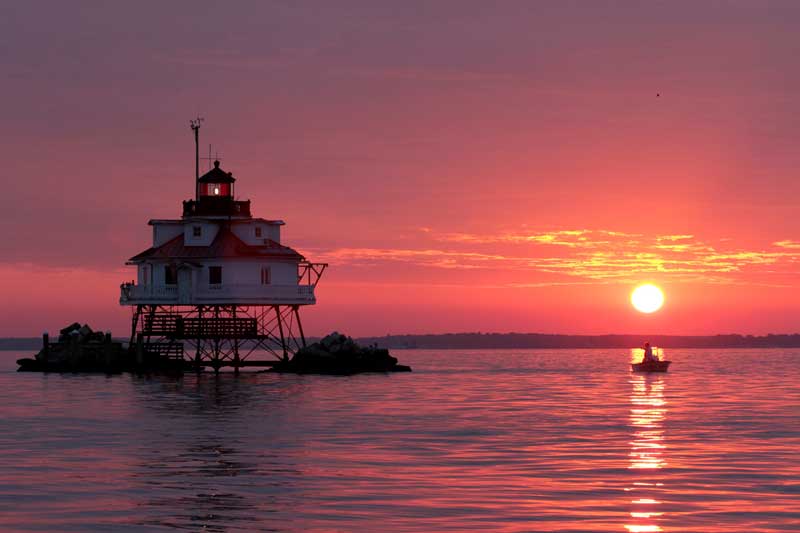
1. Bay Bridge
The Gov. William Preston Lane Jr. Memorial Bridge, or simply the Bay Bridge, connects Maryland’s Eastern and Western shores. The first span of the bridge opened in 1952, and at the time, was the world’s longest continuous over-water steel structure. When it opened, it effectively shuttered ferry service across the Bay. The parallel span of the bridge was added in 1973.
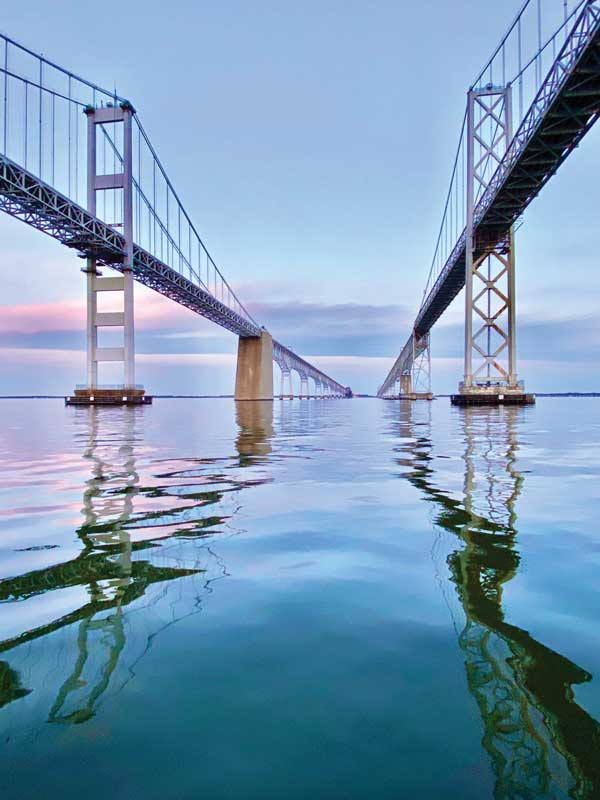
2. Calvert Cliffs
The massive cliffs that make up Calvert Cliffs State Park stretch for nearly 24 miles along the shoreline of Calvert County, MD, and were formed over 10 to 20 million years ago. At that time, all of Southern Maryland was covered by a shallow sea. Today, the cliffs contain fossils of prehistoric species, including sharks, rays, and even whales. Fossil hunting is permitted at the open beach area at the end of the red trail, approximately two miles from the parking lot. Due to the danger of landslides caused by active cliff erosion, and the serious injuries they cause, climbing upon and walking beneath the cliffs is prohibited, and it is illegal to collect fossils beneath the cliffs.
3. The Chesapeake Bay Bridge-Tunnel
The Chesapeake Bay Bridge-Tunnel (CBBT) spans 23 miles at the mouth of the Chesapeake Bay, connecting Northampton County on the DelMarVa Peninsula with Virginia Beach. From shore to shore, the structure measures 17.6 miles. It includes 12 miles of low-level trestle, two one-mile tunnels, two bridges, nearly two miles of causeway, four man-made islands, and five and a half miles of approach road, totaling 23 miles. The complex cuts 95 miles off the journey from Virginia Beach to points north of Wilmington, DE. Following its opening in 1964, the CBBT was selected as “One of the Seven Engineering Wonders of the Modern World.”
4. The Chesapeake and Delaware Canal
The C&D Canal connects the Delaware River with the Chesapeake Bay. It is 14 miles long, 450 feet wide, 35 feet deep, and saves approximately 300 miles on the routes between Wilmington, DE, and Baltimore, MD, and Philadelphia, PA, to Baltimore. In Chesapeake City, MD, visitors can learn more about the history of this busy shipping channel at the C&D Canal Museum. Owned and operated by the U.S. Army Corps of Engineers, this free waterfront historic site is located inside the original 18th century pump house that once controlled the water levels in the locks along the first edition of the canal.
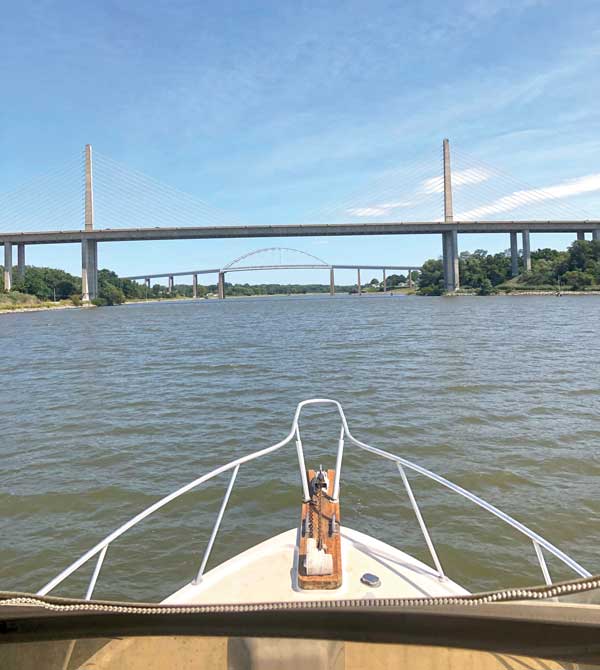
5. Fort McHenry
Fort McHenry in Baltimore, MD, was constructed in the shape of a five-pointed star between 1799 and 1802 and was used continuously by U.S. armed forces and the Coast Guard through World War II. The fort is most notably remembered for its role during the War of 1812 when it successfully defended Baltimore from an attack by the British Navy. During the bombardment, Francis Scott Key witnessed the American flag still flying over the fort the morning after the battle, signaling an American victory and inspiring him to write a poem that would later become our national anthem: “The Star Spangled Banner.”
6. Greenbury Point Towers
For boaters charting a course for Maryland’s capital, the three towers located on Greenbury Point are a welcome landmark for Annapolis. The towers were originally part of NSS Annapolis, known as Naval Communications Station Washington, DC Transmitter or NavCommStaWashingtonDC(T), a transmitter station operated by the U.S. Navy. After the Cold War, the station was rendered obsolete and ceased operations. The antennas and most of the towers were demolished in 1999, but three of the smaller towers were left standing to serve as aids to navigation for boaters on the Chesapeake Bay.
7. Kiptopeke Concrete Ships
Just off Kiptopeke State Park in Cape Charles, VA, lies the Kiptopeke Breakwater which is comprised of nine concrete ships partially sunk post World War II to provide protection for the ferry terminal (which closed in 1964 following the opening of the CBBT). These ships were built during World War II as an alternative means of shipbuilding when steel was scarce. Today the ships are a fishing hotspot in the Lower Bay, and paddlers have the best shot of getting up close and personal to this piece of history.
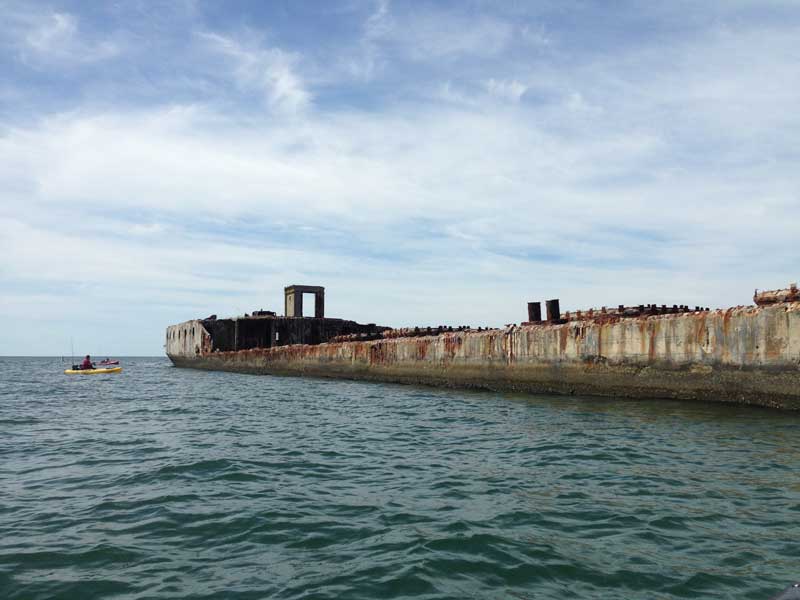
8. Lighthouses
Perhaps no lighthouse on the Chesapeake Bay is more iconic than the Thomas Point Shoal Lighthouse. Constructed in 1875, Thomas Point is the only screwpile lighthouse in the Bay which stands at its original location. But Thomas Point is by no means the only lighthouse on the Bay. For a full list of lighthouses in the Chesapeake region, visit the Chesapeake Chapter of the U.S. Lighthouse Society and click to ‘LH Heritage’ then ‘Lighthouses.’ You’ll soon find that each lighthouse has its own unique history and story to tell.
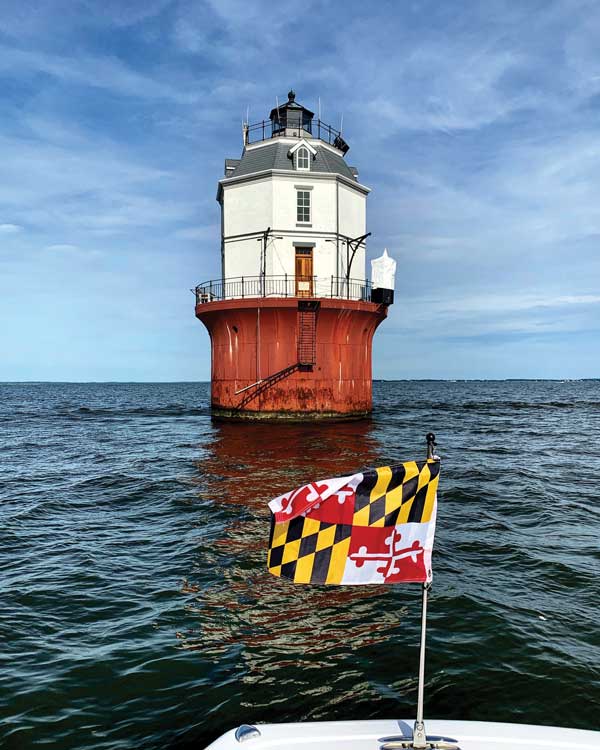
9. Skipjacks
Skipjacks are traditional fishing boats used for oystering on the Chesapeake Bay. They are the last working boats under sail in the United States and were designated the State Boat of Maryland in 1985. At that time, the Maryland General Assembly noted that, “Nothing better represents the way of life of Maryland watermen than the historic Chesapeake Boat known as the Skipjack…” At one time it was estimated that about 2000 skipjacks plied the waters of the Chesapeake. Today, only a few dozen remain. The oldest surviving skipjack currently in the Chesapeake Bay fleet is the Rebecca T. Ruark, built in 1886. In July of 2003, she was designated a national historic landmark by the U.S. Department of the Interior. The Rebecca T. Ruark currently resides in Tilghman Island, MD, and is available for two-hour sails and private group charters with Captain Wade H. Murphy.
10. Tangier Island Crab Shanties
As you approach Tangier Island and make your way into the channel, you’ll find the thoroughfare lined with crab shanties, many built on stilts out in the water. For over 250 years, crabbing, oystering, and fishing have driven the economy of this small island, and the shanties give visitors a glimpse into the watermen’s way of life. When planning a future visit, the Tangier History Museum and Interpretive Cultural Center is a great resource for learning about the history of Tangier’s people and way of life.
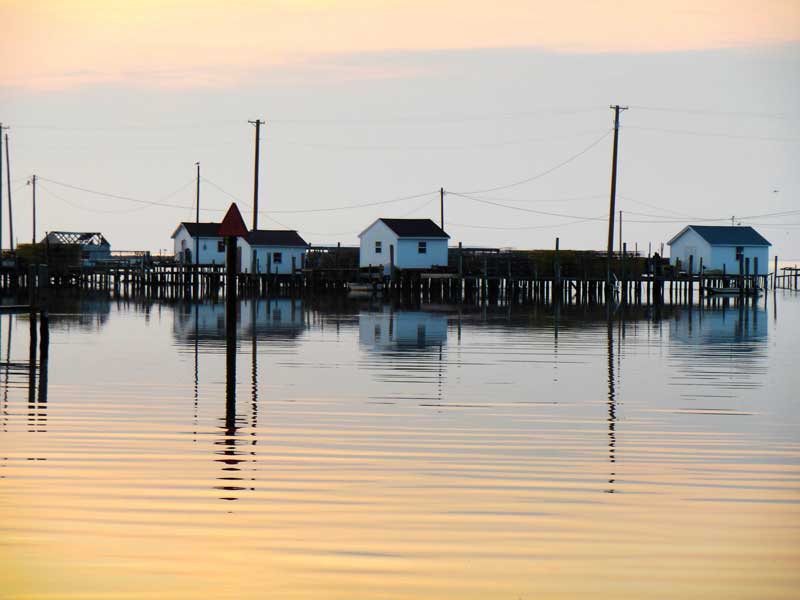
For more information on destinations around the Chesapeake Bay, check out our See the Bay section.